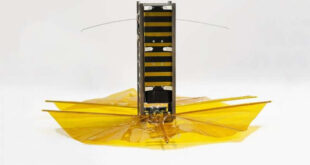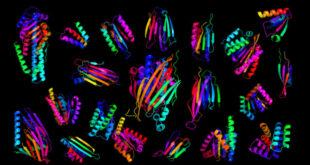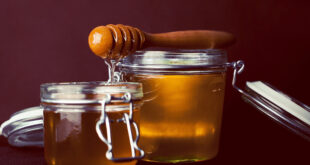Polyphenols, a group of natural compounds found in grapes as well as other fruits and vegetables, are key compounds responsible for ultraviolet (UV)-photoprotection, according to new research.
Grapes may help protect against damage to the skin caused by solar UV radiation. Image credit: Bru-nO.
“Major grape polyphenols include the flavanols (catechin, epicatechin and proanthocyanidins), stilbene compounds (resveratrol) and ellagic acid,” said Dr. Allen Oak, a dermatologist in the Department of Dermatology at the University of Alabama at Birmingham, and colleagues.
“Many of these constituents demonstrate anti-inflammatory and anti-neoplastic effects in murine models.”
“A prospective single-group, open-label, intervention study was carried out to examine whether dietary grape would prevent UV-induced photodamage in humans.”
The study involved 19 healthy human volunteers (age 19 and older, Fitzpatrick skin types I-III).
The participants were given a powder of freeze-dried grapes (75 g daily) to ingest for 14 days.
“The results (74.8% increase in natural protection of the skin) indicate that oral consumption of grapes has systemic beneficial effects in healthy adults,” Dr. Oak said.
“These benefits include inhibition of inflammation and repair of DNA damage.”
In addition to consumption of the powder, the study also showed that the application of a topical extract made from a grape seed polyphenol, proanthocyanidin, can reduce sunburn cell formation.
Furthermore, preliminary results suggest that grapes may help to prevent skin cancers as well, although more studies need to be conducted in this area before drawing conclusions.
“Grape consumption may act as an ‘edible sunscreen’,” Dr. Oak said.
“This does not mean that grapes should be used in lieu of sunscreen, but they may offer additional protection which we are eager to continue learning more about.”
“This research is exciting because our current findings provide building blocks for additional studies that may eventuate in an oral photoprotective product from a natural source.”
The results are published in two papers in the Journal of the American Academy of Dermatology.
_____
Allen S.W. Oak et al. Dietary table grape protects against UV photodamage in humans: 1. clinical evaluation. Journal of the American Academy of Dermatology, published online January 20, 2021; doi: 10.1016/j.jaad.2021.01.035
Allen S.W. Oak et al. Dietary table grape protects against UV photodamage in humans: 2. molecular biomarker studies. Journal of the American Academy of Dermatology, published online January 20, 2021; doi: 10.1016/j.jaad.2021.01.036
 #Bizwhiznetwork.com Innovation ΛI |Technology News
#Bizwhiznetwork.com Innovation ΛI |Technology News




